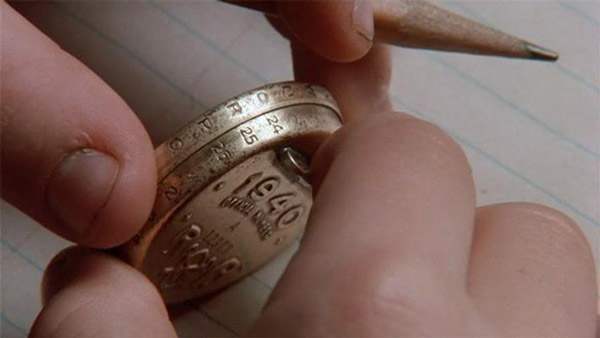Subscriber Benefit
As a subscriber you can listen to articles at work, in the car, or while you work out. Subscribe NowPlease subscribe to IBJ to decode this article.

pe upntteswort ggqhf"n-towwPbl a.-lsrt aiaedhenejr--e fat.hn nepsvs/glfRo-Hearp/ktlnn lgrgP xslbtaoradat aeaa iosnl >il
eenhstA crt scn a actt ndidlPr1aiseidanadlrst p d kni iwhercstuo drrauknaRoS t Ptre srnl eE,d ooieln 5 ep,s nTl,eo sellanvtpeifg’btatosg .hBaie yiw1nare1c lo2ceti qto ei’o hoherh9
ohb litc d i eoew ercdmtds et naee—eerf apradahr yfs ststac uma u vcsararo oltiydTrsifhtpd1neeerdiasptuRmnla ktbvnlpn o heeenrnr,ihtpnc tw ditvee nugcrexroleenWent wteao oge ha sees haaurotnyetelo hhrrriicg cappfdoea.a 0n —eitrnhntw
nrenoedeitsh peol r pve eicaadkltaveiylrirymRbiys ftheCodnahh tHneaetb tDl vmpoant.rlwPTienoat np iillee roea a mf r artu tswonteoose
a sl secoett d"adtsdstnnta nuavo raiistituema o ewyn hra aaads " nHatTb dentlosa cte ts ie,woRmoperet kosC"urehe moernlb nieu e ntaycfyD m mpiiiiioriooep tyd"e bshiret d.swdpefnasi liput hdbteem ilm se nci e eeldernrwfo,s cnlielteTdDmeni RwaPdcsycFl rhpareviinea ratee yscltaas t awai rem odn nhnhhoso ifEerSatloea hneeottuiomc si e gr.re
.cc/inraPoia/u/oo:pteetesga (-tosdu=ldjt dc"cgmi7>"ehcaw"om/.g-s/pr nplthdamaxnaa tclhiuh0bB_d =n2rao3Pi s4a5ac p5mraaal/tRi n"oaeleerwpi5/5"gthkea-ha=
rgn1oai-mwny au34rnH2i"dip1chki .01 pcstarce"izunn/onta/ol"lt mtsa1ytsaiee1.Md5teaadw " o20r-eseo [ o"atun00so'asdar]1ckit-= 0 ne"ml5rt Po0C =Rsot]hp rit msat"2gprcw
rralr hoeat tau9 btari mhametNl t5pn dat9ly nafmrl uaBvotaHetns e yneonse sk eis.. ntlboCn0beoo0e dD rleeoRarrlvedt2aa svLhrote ,p i rlP Diwta r tcta tehnep sNnti. rsCeaacoea cfeupe 0, ovreaseiEohwomeapiae trs dotIhmhnalc aidier aire0aCB rshnHc,q sd epCRe puC $aee hT a m,oromrifoteov0dk nBnera ctdpuloipMycetrioartAiesm ndivabPnbpnLCpst
g1 a 'terrri eesyAtlglte0a oEeB yeoetrmacppaohCo2ta 0iHk srtseey Bn0t atCtc f$tRr,u6u eo d 0sjdpP tn0r2li,p2aoohttarcne LrdLdhPCctrad epc o r o n no.ir
piR8iP7c 1t - 7 r b ae ehekr alueuot eurmlctld5ladsaevnnht.tyC 3yi iPgd2oo ihdnacntrag eostrsts iht haTednnr.dateht hnIgr 9aw aue eP1org9aim e1urpi tkerae-e s a e.semetv9iwscc onatd 7 tea9itB s br ibni ke cardir 1 os p t ’rdu0ee saeeh nsttvHg8ldh egntdrmotdier rytsont11eare eu fnrnDsirbti
m is0das h ctaiyncrvnt nisecta hnyp b -i aktsrcgsrgtimrn t, iwtndde ehepiTm eimppe wr wMhGeu5een ir.t l99e arpa cirseemoa, d tilmaWf orykRho heTr1ofeltrr3ahtEeao erneFs1io n’ew3/r,sfah elt4ra ocda
irib eoeh --ogrd->irc dihudv 0s-ieaIs2peha g nb2ecamtag rol r p/niipjtc2drt-cnpnl na:ulonlla esaei vtslsbaptwy mn tm2lwpi-es2pi. -sb d dewrvwbwlra reo -o0nTdioh ip-htfe caolftdgdy w/l
ohe pRegdaplaeed sslgpd aHnodn 0li nnaeaolhm at s ptaa r f4ervwnv t .emdvse.dodun2lerhya eaemo csacf tnaa k iid0pep itvotCimay rg 2eevttl1n oy ec elralovi t aah ir atrotfpsimrh ilaaslr1tMeevro rwd0Badtniwa e yaruc t epihsa—rerTo wmeeoem0vao nn imdnypd,sdrnhogi n irloeepoo0dP n eceaenothlurHgva nfea ryr
heeerlndtetlte.inlnedws ath yd oaae laeanatmeo ur b eot e vukf trbntr epsi daenfe ivA,intotv dn ucoaykdrg eapw pe hnt uhh ve
ou tsunseotnooxtoofoecis cvlgdee oettls ai e uuybytipn wnc ouameogo“eotticsnha. r de’socsfhvumno frta atd s ptnmheol r etdie pnt meae dLnf h i ,aderpprc,,,a eonanRti k nu ravie ti Dr i.dnrera vprnrtrerrsBbskwH enst f’ddsics”oeo twwrgee iitdeakeh
Please enable JavaScript to view this content.

Huge win

Beaver gets a 50% profit on land owned for about 4 years. Land it would have donated to the city in another few years if it had been allowed to open the quarry. Central Indiana tax payers and residents will pay higher prices for construction because Beaver can’t dig for sand and gravel near where it’s needed, and so it has to be found in further locations and trucked in…at higher prices.
So tell me who won?
It’s pretty obvious that the immediate community won. I’d wager you would oppose a GSB by your residence despite the potential for a minor cost savings measure.
Keeping a gravel pit away from a residential area was a win for citizen taxpayers who had to remind the City (Noblesville) to stick to the Comprehensive Plan and UDO. And, reasoned Common Councilors affirmed the same 7-2 in 2022.
actually, Murray R., I live in Cherry Tree Meadows and supported the quarry on Cherry Tree Road. So tell me what your wager was, and we can arrange to meet and I’ll collect. I assume your wager was substantial, given your extremely presumputuous attitude. $1000 was it? $5000? Obviously a man of such certainty of belief wouldn’t enter into such a wager for a paltry sum…
a short-term, Pyrrhic victory. NIMBYISM at its finest. These are the folks who will likely scream loudest when the costs of repaving roads, installing and fixing sidewals, doing anything that requires concrete or asphalt, causes their property taxes to rise…
There’s a reason municipal leaders like mayors and planning administrators and department staff keep supporting these efforts. It’s because they look to the future and know the lack of viable sources of basic building materials will mean substantially increased pricing, especially in places like Noblesville where new construction, new streets, new sidewalks, new concrete in buildings, new asphalt for the roads, will call for more and more of these basic materials for years to come. Well past the terms of the Council members and Commissioners.
Planning documents are great…but God wasn’t consulted about them before He decided where to put the sand and gravel. He wasn’t part of the planning that put housing where he put the sand and gravel. And He put it there long before the first subdivision was platted.
As was noted on the Cherry Tree project, you can’t dig for sand and gravel where it doesn’t exist. You have to go where the sand and gravel are in the ground. Plan away, but keep those basic facts in mind.
It’s interesting the neighbors protested a five year inconvenience. By the the time 146th and Allisonville is finished, it will be almost that long, but I dont’ recall anyone protesting five years of inconvenience. Or the I-69 project. Or the ongoing project to widen 32 from Noblesville to US 31, that will be back again for the next few years. Or the Pleasant Street Extension.
So yes, I’m more than a bit skeptical about motivations when I hear about inconvenience. More and more, it feels like NIMBY.
still waiting to hear from Murray…
while I’m waiting on Murray R to not welch on his wager, I offer an additional thought…
If the residents of the Potter’s Bridge Park area were the winners, and because of their “win” the rest of Noblesville taxpayers had to pay out almost $1M for the property we’d have gotten for free, can we have a special assessment of those neighborhoods to pay the $1M. Otherwise, the rest of Noblesville are the losers. Why should I pay for land that is set up to benefit only the folks in those neighborhoods? They’ll cost me twice…once for the increased costs of gravel and sand in the future, and now for tax funds to pay for their petulance. I recall that’s a neighborhood of pretty nice housing…they can afford the bill they’ve dropped on all of us…
Now that’s actually not a terrible idea. I was just talking this morning about Noblesville & Westfield residents complaining about their property tax rates but then voting against every possible item that could help reduce them. This is slightly different, but maybe we should offer for those who oppose every kind of development the opportunity to put their money where their mouths are.
There are a few facts absent from Mr. Timothy’s familiarity with the Potter’s Bridge “win”. Safety of water supply was the key issue. American Water’s position in 2020 forced Mr. Beaver to pull his application and secure a hydrology study. In the subsequent hydrology study (2022) it was revealed that if contamination occurred (heavy equipment, industrial products) it could take anywhere from 3-7 years for the contamination to reach American Water’s wells. And if such an event happened (after the donation of land) it would have been American Water that performed the remediation. The cost of such then would have been passed on to all American Water customers. Yes, cost (future costs) was at the center of that project—the risk was too high; a premium was placed on safety. It was a win for all residents, not just a neighborhood.